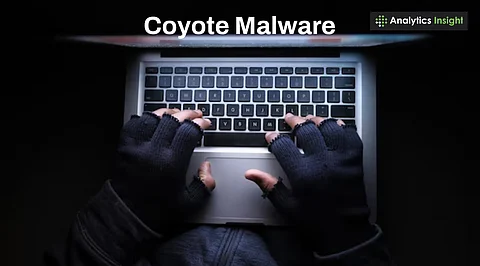

Coyote malware steals banking data through accessibility abuse and overlays.
Avoid sideloaded apps and use trusted mobile antivirus tools.
Monitor app permissions and update regularly to block threats early.
Coyote malware is a newly discovered strain of Android malware specifically targeting banking applications to steal sensitive financial information without the user's awareness. As mobile payment usage continues to rise, so do the associated security risks. This sophisticated banking trojan operates stealthily, often bypassing standard security protocols with ease.
The Banking Malware threat has intensified in 2025, with attackers using stealthier methods to steal user credentials. In this article, we will guide you on how to detect Coyote malware, prevent its spread, and protect your online banking data effectively.
Coyote malware is a banking Trojan that mostly gets onto Android devices through sideloaded apps or bad downloads. It can:
Steal one-time passwords (OTPs).
Show fake login screens on banking apps.
Record your keystrokes once it's launched.
Coyote is not like other malware because it abuses advanced accessibility services, making it difficult to find and remove without technical expertise.
To stop Coyote Malware in 2025, users should avoid sideloading apps and keep all software updated regularly. When Coyote comes, it usually looks like a real app. It takes over the disability settings once it is given permission. This lets it:
Keep an eye on what's happening on the screen.
Cover up fake login screens.
Take access codes from apps.
Record 2FA codes.
Avoid attempts to uninstall.
It is part of a bigger trend in Android software that turns real system tools against the user.
These are common signs that you have Coyote malware:
When you open banking apps, you get strange pop-ups or login screens.
Slower phone speed.
Apps that ask for too many rights.
Strange battery drain.
Someone is making changes to your security settings without your permission.
Also read: How to Find & Remove Hidden Malware in Your Android Phone?
Installing Coyote Virus protection tools can significantly reduce the risk of a mobile banking data breach. To keep yourself safe, you need to be cautious and practice good digital habits. Do these things:
You should only get apps from reputable stores, like the Google Play Store. Do not get APKs from unreliable sources.
Be cautious of apps requesting access to SMS or disability services. Take away rights that are not needed.
Install a mobile security app from a reputable company that checks for banking Trojans and strange behaviour.
Make sure your Android OS and apps are up to date. Most of the time, security patches fill in the gaps that malware uses to get in.
Google Play Protect checks your device often. Keep it turned on and check often for any strange apps.
Back up any important data and return your device to its original settings if you think you have an infection. Install only confirmed apps again.
Cybercriminals are continually devising new methods to bypass the defense. Follow tech stories and updates about new Android malware to stay ahead of the game.
Multi-factor authentication (MFA) should be used as much as possible.
Avoid entering your banking information after clicking on sketchy links.
Also read: A WhatsApp Link Is Inviting Virus Into Your Device Today. Protect Your Phone Like This
Coyote virus is a very serious threat to your cash safety. You can keep your device and your money safe, though, if you take the right steps. Be careful when you use apps, keep an eye on your rights, and learn about new mobile risks.
A mobile banking data breach can expose sensitive personal and financial information, leading to identity theft and unauthorized transactions. Remember that your phone is a way to get into your bank account, so protect it like you would your cash.
